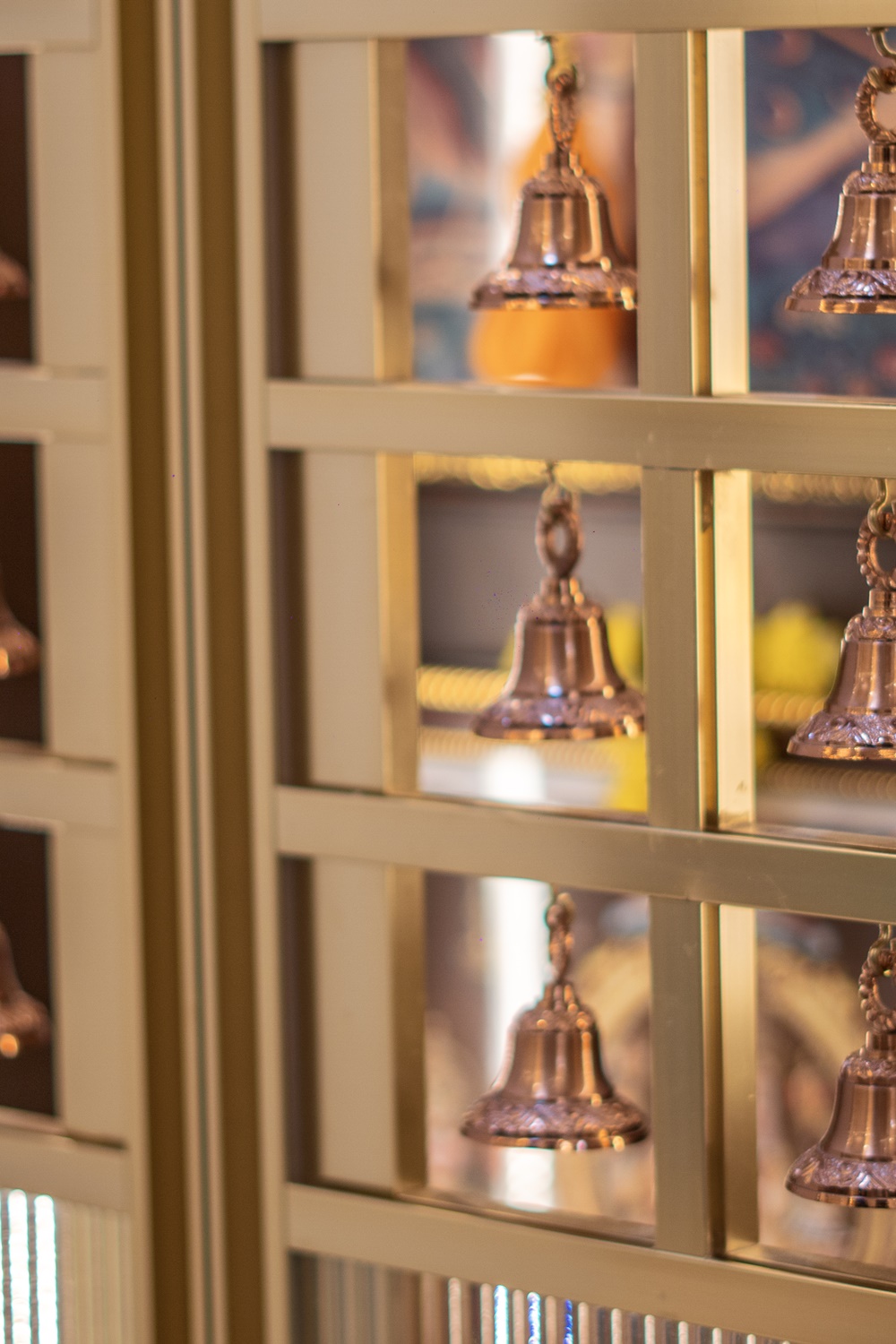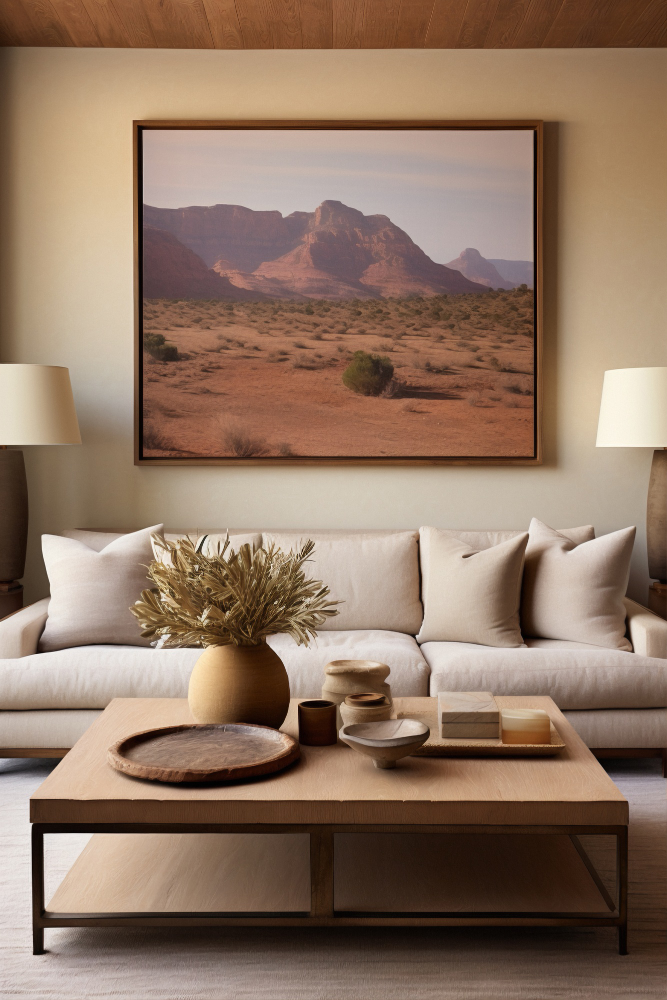
Pooja unit.
A pooja unit in the living room is a dedicated space for worship, prayer, and meditation, reflecting the spiritual essence of the home. It is typically designed to house idols, religious artifacts, and other sacred items, while blending harmoniously with the overall decor of the living area. A well-thought-out pooja unit enhances the aesthetic of the living room while creating a peaceful, serene atmosphere.
Key Elements of a Pooja Unit:
1. Design Styles:
- Traditional: Crafted from wood with intricate carvings, traditional pooja units often feature doors with lattice work, temple-like domes, and ornate designs that reflect Indian craftsmanship.
- Contemporary/Modern: Minimalist and sleek, with clean lines and a focus on simplicity. These units are often made from materials like metal, glass, or MDF with polished finishes, blending seamlessly into modern living room decor.
- Wall-Mounted: For compact spaces, wall-mounted pooja units offer a neat, space-saving solution. These units often include shelves or small cabinets for storing deities and other items.
- Floor-Standing Units: Larger, temple-style units placed on the floor create a more prominent pooja area in the room, giving it a grand and dedicated space for rituals.
2. Materials:
- Wood: The most traditional and widely used material, offering warmth and natural beauty. Teak, rosewood, and sheesham are common choices for their durability and elegant grain patterns.
- Metal: Brass or copper accents can be used for doors, knobs, or details, adding a divine touch. Some pooja units are entirely made of metal for a modern, industrial look.
- Marble/Stone: White marble units are popular for a pure, clean, and sacred appearance. Stone units also offer a timeless, durable structure.
- Glass: Glass shelves or backdrops are used in modern pooja unit designs, often combined with lighting for a sleek and sophisticated appearance.
3. Size and Shape:
- Compact Units: Ideal for small living rooms or apartments, these units are designed to be space-efficient while maintaining a sacred space for worship. They often feature a small cabinet or floating shelf with space for a few deities and essential items.
- Large Units: More suitable for spacious living rooms, larger pooja units can have multiple shelves, cabinets, and drawers, with ample space for rituals and storing items like pooja thalis, incense, and lamps.
4. Components:
- Idol/Deity Placement: The central area of the pooja unit is dedicated to placing idols or religious symbols. The placement should ensure that the idols are at eye level or higher to maintain reverence.
- Shelves and Drawers: Shelves for displaying religious books, diyas, incense holders, and other sacred items. Drawers or cabinets are often integrated for storing pooja essentials such as oils, matchsticks, and puja plates.
- Lighting: Soft, ambient lighting is essential in a pooja unit to enhance the spiritual atmosphere. Many units feature built-in LED lights, spotlights, or traditional lamps (diyas) to illuminate the deities and the surrounding space.
- Bell or Ghanta: A bell can be hung from the top or placed on a shelf for use during rituals.
- Incense Holders: Small slots or shelves are often integrated into the design to hold incense sticks and other offerings.
5. Doors and Shutters:
- Open Pooja Units: Units without doors are often used in modern living rooms, allowing the space to stay open and accessible.
- Doored Units: Traditional units may have beautifully carved wooden or lattice-patterned doors that can be closed when not in use, maintaining the sanctity of the space. Some modern units use glass doors for a contemporary feel while still protecting the items inside.
- Jaali or Lattice Work: Intricately designed jaali work on doors or side panels is common in traditional pooja units, adding an element of craftsmanship and artistic detail.
6. Placement:
- Corner Pooja Units: Placing the pooja unit in a corner is a popular choice, particularly in smaller living rooms. It utilizes space efficiently while creating a quiet, private nook for worship.
- Wall Niche: Some homes incorporate a built-in niche or alcove in the wall to house the pooja unit, offering a seamless, integrated look.
- Standalone Pooja Rooms: In larger living rooms, a pooja unit can be placed in a distinct area or corner that serves as a dedicated space for worship, separate from the main seating area.
7. Decorative Accents:
- Backdrops and Panels: Decorative back panels made of wood, stone, or metal behind the idols add depth and enhance the overall design. Some units feature divine symbols like Om or Swastika etched or engraved into the design.
- Rangoli or Toran: Traditional rangoli patterns can be drawn at the base of the unit or decorative torans can be hung at the entrance to add a festive, spiritual touch.
- Floral Arrangements: Fresh flowers, garlands, or even flower motifs carved into the unit add a natural and devotional aesthetic.


